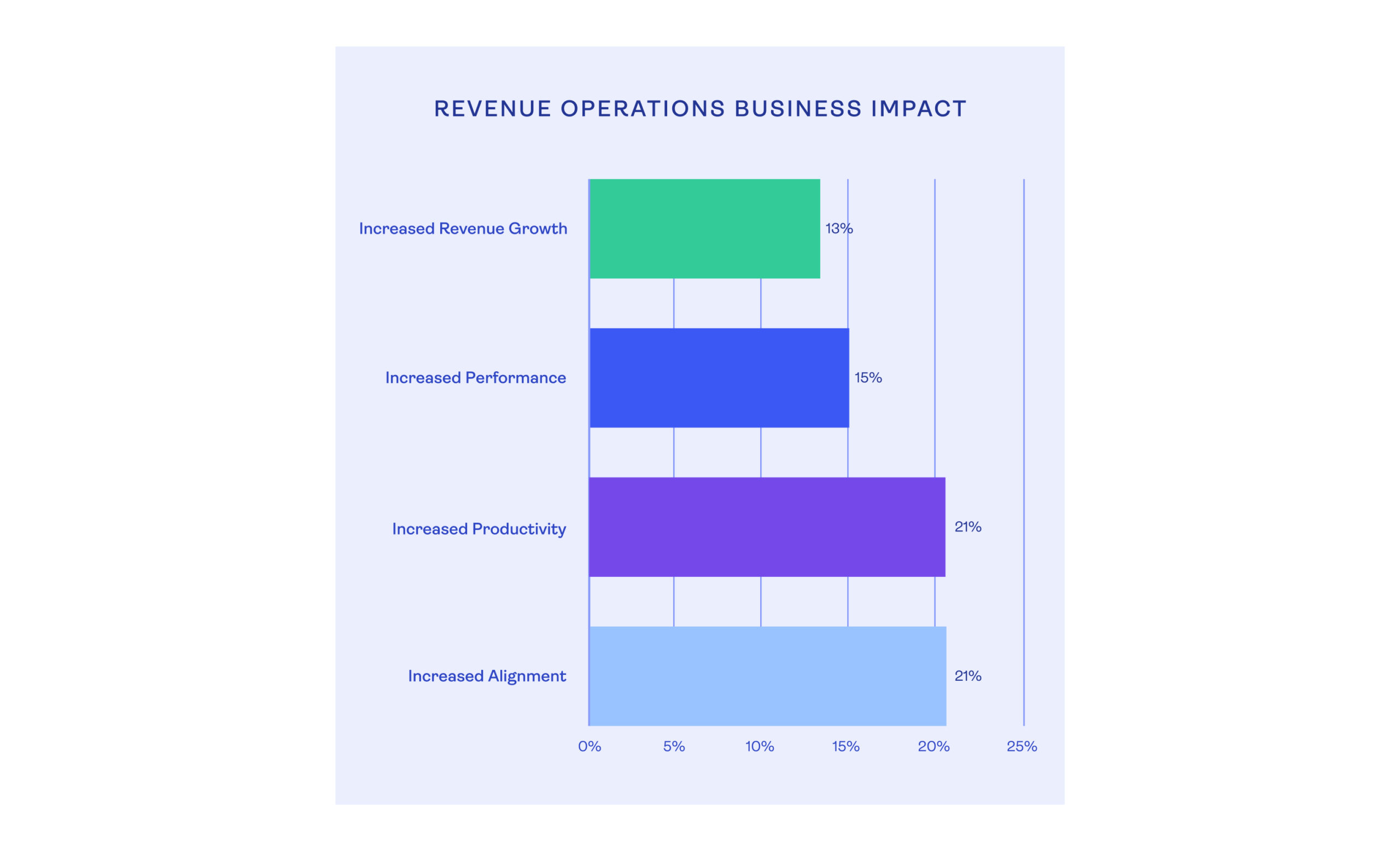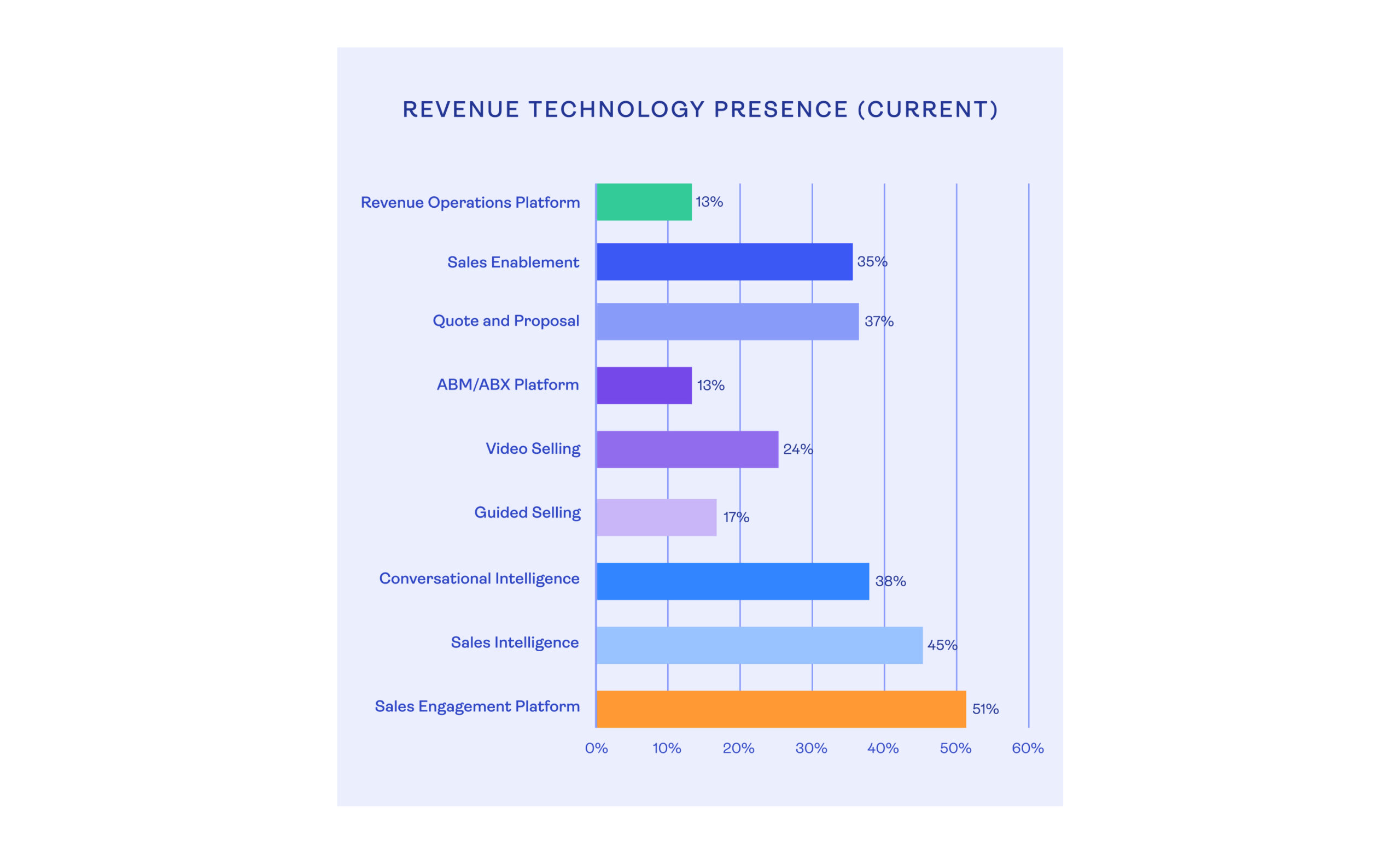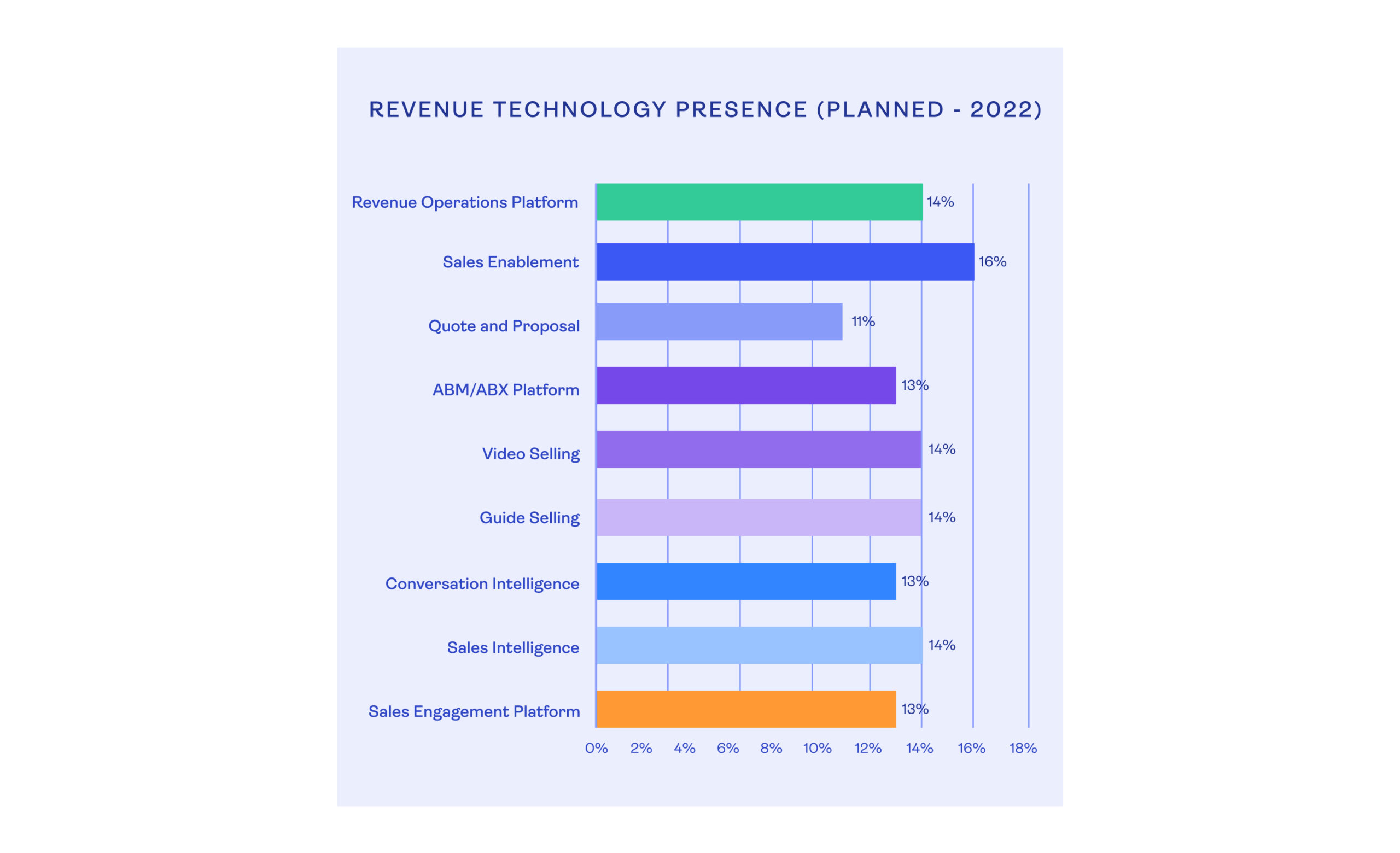The Complete Guide to Choosing the Best RevOps Platform
Understanding how to attract, retain and expand customer relationships has become increasingly crucial as customer acquisition costs soar and conversion rates decline. In response to this pressing need, a movement called Revenue Operations (RevOps) has emerged in recent years.
RevOps aims to unify marketing, sales, and customer service into a cohesive strategy and organization, helping B2B companies overcome inefficiencies and drive growth. It is also essential to meeting customer expectations, as many customers expect consistent experiences across departments.
In this post, we will define Revenue Operations, explore its benefits, discuss the cultural shift it requires, provide a guide to building a RevOps function, list popular RevOps platforms, highlight key functionality of RevOps platforms and offer further resources for deepening your RevOps knowledge.
What is Revenue Operations (RevOps)?
Revenue Operations (RevOps) is a total alliance between a company’s sales, marketing, and customer success teams with the goal of creating a single unified revenue process. This process fully integrates the marketing funnel, sales process, and customer retention strategy to unify data, goals, and processes to achieve end-to-end accountability, visibility, and drive an exponential increase in revenue.
Ultimately, revenue operations is about empowering revenue teams to build better relationships with their buyers and customers. This happens through some key shifts in strategy, adoption of a RevOps role and usage of the right revenue operations software.
Why So Many Companies Are Adopting RevOps
As the idea of RevOps has garnered support and champions throughout the B2B sphere, many executives and operations professionals have started to take notice and ask: who has actually adopted a RevOps model? And what results are they seeing?
To answer this question, Revenue.io executed original research in partnership with RevOps Squared for the Customer Acquisition & RevOps Team Benchmarks report. After asking hundreds of B2B companies how they were thinking about RevOps, we found that 41% of companies currently have a Revenue Operations function, which is a 15% increase year over year from 2021. A further 11% of companies are planning to introduce the function in the following year.
This growth is not surprising, when you consider the following benefits that Revenue Operations confers:

When a Revenue Operations function is introduced, 21% of companies see both increased alignment and productivity (which often increases operating margin as measured by revenue per employee), with another 13% experiencing increased revenue growth. Sales and Marketing alignment also benefits, with 21% of companies seeing an improvement in alignment between teams.
Since 48% of companies currently don’t have a Revenue Operations function, introducing it early could give organizations a significant edge over their competitors. If you’re considering joining the companies who are already reaping the benefits of RevOps, then you’re in the right place – this blog post will give you a step-by-step guide to building your own Revenue Operations function.
The RevOps Cultural Shift
But before we go any further into how you can introduce RevOps at you company, we need to cover one idea that’s at the very heart of RevOps: In order to work together effectively, all departments that participate in a RevOps strategy need to have shared data, shared workflows, and a shared commitment to observability and transparency.
This often requires a shift in technology, since companies find that their teams are looking at disparate sets of data (and it’s pretty hard to agree on anything when your numbers are different). But we’ll get into that later – right now, it’s important to stress that “RevOps” is not something that you should go out and buy from a single vendor. Rather, it is a structure that directs the flow of information throughout your organization. For leaders to successfully build a RevOps program, they will need to actively guide that flow of information so that there’s a common set of data and reporting that are available cross-functionally.
RevOps Leaders in Practice
To start, RevOps leaders must have a clear understanding of their company’s current way of working, and how that structure and culture can impact the flow of data. If departments are used to working in silos, for example, that will require not just technology, but also a cultural shift in order to address the issue.
Multiple companies are running into the need for such a cultural shift, since Gartner has found that over half of CSOs are either thinking about implementing or are in the process of implementing a RevOps function. Moreover, over a third of tech CEOs from companies with $250 million or less in revenue agree that sales and marketing aren’t aligned when it comes to strategies to increase growth.
The issue of silos and misaligned teams is a common one. Yet it is the companies that can overcome these cultural challenges and work together cross-functionally that will succeed in running a RevOps function and its supporting technologies. They’ll also reap the benefits for their business, since it’s been found that organizations that maintain focus on alignment achieve up to 19% faster revenue growth.
Three Steps to Create a Revenue Operations Strategy
Step 1: Get An Accurate View of Data Across Your Organization
To start, you’ll need a way to make sure that accurate contact and activity data is being captured in your CRM. Technology can help you get there, thanks to advancements in AI for sales and a broader set of workflow and analytics responsibilities.
When looking for technology to help you organize your data, there are two main categories:
- Activity and contact capture. In order to properly capture data, they should be able to scrape email, calendar, and voice data. It should also be able to automatically update your CRM with activity records associated with the right accounts, contacts, and opportunities. Without this level of insight in your CRM, implementing a RevOps strategy can be incredibly difficult. The market has evolved to a place where many sales acceleration and sales engagement vendors also offer activity and contact capture capabilities (Revenue.io does this, for example). These solutions combine multiple capabilities so that you have a single hub from which to execute multichannel communication with prospects, generate metadata from engagement, and update CRM records.
- Conversation intelligence. These solutions mine the data that exists in company’s your conversations by recording, transcribing, and analyzing calls to uncover insights. These can include data and sometimes prescriptive recommendations based on the topic of conversation, sentiment analysis, and skills that employees possess. Depending on the vendor you choose, they may also be able to log this data in your CRM for other use cases, such as deal and opportunity health scores.
Step 2: Automate Workflows Across Your Tech Stack
For workflows to run smoothly across your organization, your data needs to be united. Companies with advanced Revenue Operations functions use machine learning to trigger and run workflows that help their employees know the next best action they should take or the health of their accounts. It’s preferable that the tools which enable workflows across your tech stack be purpose-built or low-code so that citizen integrators can use them easily.
- Data lakes and data warehouses. For analytics to be run, they need large amounts of detailed data. Data lakes as a catchpoint for the detailed data that your company generates, so that you can run analytic processing.
- Low-code or no-code workflow orchestration. Knitting together a disparate tech stack can be difficult for operations teams that don’t have extensive coding skills. As a result, enterprise companies have turned to integration platform as a service (iPaaS) providers to help their operations employees create and manage workflows that span multiple applications and sources of data.
- Lead-to-account matching and routing. If you have a lot of lead records and don’t know which account record they should be assigned to, lead to account matching was designed to solve your problem. L2A not only cleans up records, it can also help automate and manage complex routing decisions, such as who to assign each lead to as it comes in.
- Revenue data management. Depending upon what you’re trying to do, different vendors have appeared to help companies maintain their data quality across multiple RevOps use cases, including:
- Data integration
- Data validation
- Data hygiene
- Data enhancement
Step #3: Centralized Analytics for All Revenue-Generating Departments
If teams are looking at different analytics, they won’t have a unified view of how the business is doing and will therefore fail to operate as a single revenue function. This is why RevOps leaders must prioritize a single view of the health of the business.
- Analytics. Analytics platforms gather insights from all revenue-generating and customer-facing teams, and make sure that important data about customers is easily accessible and applicable to marketing campaigns, sales cycles, upsell opportunities, and more.
- Pipeline and forecast management applications. Whether you want to review your pipeline to adjust your strategy or forecast your revenue into the future, these solutions look at data patterns to help you manage the day-to-day management required when trying to generate more revenue.
What Revenue Technology Are Sales Teams Currently Investing In?
While the steps above will give you a solid base from which to build your RevOps function, there’s no denying that there’s a lot of technology involved. So you may be wondering “Do I really need to buy all of these? What’s everyone else using?” Here’s a look at what other B2B companies have in their tech stack:

When we compare this data to other historical research by Revenue.io, we can see that Conversational Intelligence increased the most this year, with 38% of companies reporting using Conversational Intelligence – up from 25% in 2021. Guided Selling Platforms also increased by 7%.
Both Conversational Intelligence and Guided Selling tools have a strong focus on communication and can be used easily in a hybrid work setting, which would suggest that the market is trending towards more human-oriented, flexible selling solutions that can adapt to multiple environments.
According to Gartner, the two main pillars of a RevOps tech stack are Conversational Intelligence and Activity and Contact Capture.
What Revenue Operations Software Are Sales Teams Looking To Buy Soon?

If you’re contemplating your next big tech stack purchase this year, then it helps to consider what your competitors are buying too. Most notably, 14% of companies will be implementing Revenue Operations platforms in 2022, in addition to the 13% that already have a RevOps-specific platform. This represents a doubling year over year in companies who plan to invest in a RevOps platform, highlighting the growing recognition of Revenue Operations as a critical investment.
With 38% of companies already having adopted Conversational Intelligence, 13% plan to adopt it as a new investment, suggesting that the segment is more mature entering 2022. As Conversational Intelligence evolves, companies are likely to demand more of their solutions, such as AI-driven insights to help their sellers make the most of the technology.
Sales Enablement tech is being evaluated by 16% of companies in 2022, which is the same as it was last year. In light of the Great Resignation that so many companies have weathered, this is somewhat concerning. Almost 50% of companies have no formalized and automated way to ensure new sales resources are enabled to ramp quickly, and continuously build upon and improve their skills leading to increased quota achievement rates.
Those companies that are prepared to hire, quickly ramp and continuously evolve their sales resource competencies will be positioned to win in 2022 and beyond.
What is a Revenue Operations Platform?
The definition of a Revenue Operations (RevOps) platform is a solution that focuses on aligning sales, marketing, success and other customer-facing teams by sharing data and KPIs. A revenue operations platform is designed to break down silos and allow teams to work together more harmoniously, with greater accountability. Key functions of a RevOps platform include:
- Sales forecasting
- Revenue intelligence
- Sales engagement
- Strong integration with CRM
- Automated data capture
- The ability to transform insights into next best actions
- Automated Lead Prioritization
Top RevOps Platforms to Consider
Choosing the right Revenue Operations (RevOps) platform can transform how your sales, marketing, and customer success teams align and perform. The best platforms offer unified data, automated workflows, and real-time insights that support predictable growth and operational efficiency.
1. Revenue.io
Revenue.io is purpose-built for Salesforce users. It provides real-time AI-powered tools for conversation intelligence, sales coaching, and guided selling. With features like automated call summaries, Moments™ for in-call guidance, and deep CRM integration, Revenue.io empowers teams to close more deals with less effort.
2. Clari
Clari excels in sales forecasting, pipeline inspection, and deal health analysis. It helps RevOps teams improve forecast accuracy and reduce deal slippage by giving leaders real-time visibility into revenue risks and opportunities.
3. Gong
Gong captures and analyzes customer interactions across calls, emails, and meetings. It delivers actionable insights that improve messaging, rep performance, and deal execution. It’s a favorite for teams focused on refining sales effectiveness through conversation data.
4. HubSpot Operations Hub
This platform supports CRM automation, data hygiene, and integration management. Ideal for growing teams, it syncs data across tools, reduces manual processes, and keeps customer records clean and actionable.
Each of these RevOps platforms offers distinct advantages depending on your organization’s size, tech stack, and revenue goals. Selecting the right one can improve collaboration, accelerate decision-making, and ultimately drive revenue growth.
Become A RevOps Expert (Further Reading)
Want to learn more about RevOps? Right on! Revenue.io has a whole host of free resources you can use to deepen your knowledge and understanding of how this all works:
- The RevOps Podcast
If you want to go deeper into how you can build a RevOps function and you have questions like: How do I structure my team? How do I measure success? How do I work cross-functionally with sales, marketing and customer success? Then the RevOps podcast is for you. - Top 5 Metrics That Matter for RevOps Teams
The real RevOps stories are revealed in numbers, but as every operations person knows, there can be a lot of metrics to choose from. Enter diagnostic metrics, the numbers you need to measure not only the health of your RevOps function, but your company as a whole. This eBook will walk you through the five diagnostic metrics you need to get started, and includes industry benchmarks and troubleshooting strategies you can use to get your whole revenue function on track for success. - How Revenue Operations Can Grow Revenues, Profits and Value in Your Business
In this post, we just barely scratched the surface of how to build a RevOps function at your company. If you want more detailed instructions based on your company’s business model, or you’re looking for ways to benchmark and improve your existing RevOps structure, then this eBook based off research by the Revenue Enablement Institute is perfect for you.
